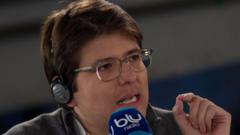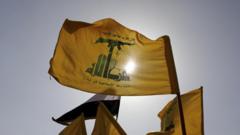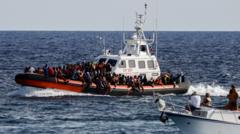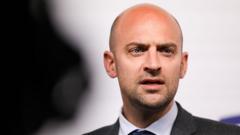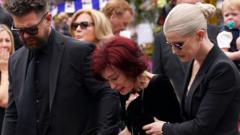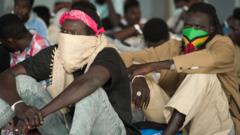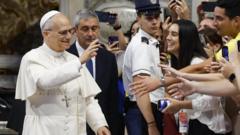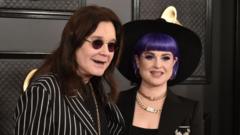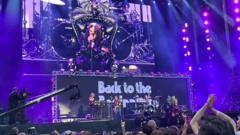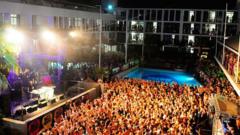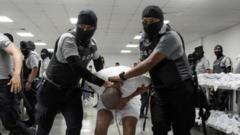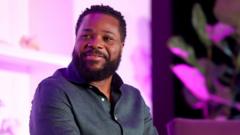In a poignant series of events, Pope Francis has passed away shortly after Easter, raising questions about his health management and his unexpected public appearances leading up to his death.
Pope Francis' Surprising Death: A Pontiff's Final Hours

Pope Francis' Surprising Death: A Pontiff's Final Hours
The demise of Pope Francis, following a brief recovery from serious illness, has left the faithful in shock while reflecting on his sudden end.
April 21, 2025, witnessed a sudden loss for the Roman Catholic Church as Pope Francis passed away at 7:35 a.m., just one day after Easter. This news comes in the wake of a significant struggle with pneumonia that had sent him to the hospital for 38 days earlier this year. Despite being discharged, many noted the pope's frail condition, as he continued to face challenges with his health.
In a pattern that characterized his 12-year pontificate, marked by unexpected turns, his death was both a shock and somewhat of a foreseen outcome for many. Official reports suggested that amid his recuperation, Pope Francis had made surprising public appearances, seemingly defying medical advice that recommended rest and isolation. His UK doctors had indicated that he had experienced serious respiratory crises during his hospitalization, leading some in the Vatican to speculate about the intentions behind allowing him to return home.
Remarkably, and contrary to his physician's instructions, Francis made an emotional appearance at significant sites leading up to his death. On the Saturday before Easter, he unexpectedly visited St. Peter's Basilica in a wheelchair, moving pilgrims and tourists alike. On Palm Sunday, he greeted those gathered in St. Peter’s Square, and just days prior, he spent time with inmates in a nearby prison.
Easter Sunday marked his final public engagement, where he briefly met with U.S. Vice President JD Vance before addressing the crowd from the balcony of St. Peter’s Basilica. His speech was a blend of hope and appeals for global peace, highlighting his enduring commitment to humanitarian issues. He ended the day with a blessing, even taking the time to bless a newborn, an act that underscored his dedication to his followers.
As the world mourns his loss, questions may linger about the circumstances of his last moments and the decisions that led to his brief return to public life. Jason Horowitz, the Rome bureau chief for The Times, has closely followed these developments, highlighting the complex nature of Pope Francis' pontificate in its final hours.
In a pattern that characterized his 12-year pontificate, marked by unexpected turns, his death was both a shock and somewhat of a foreseen outcome for many. Official reports suggested that amid his recuperation, Pope Francis had made surprising public appearances, seemingly defying medical advice that recommended rest and isolation. His UK doctors had indicated that he had experienced serious respiratory crises during his hospitalization, leading some in the Vatican to speculate about the intentions behind allowing him to return home.
Remarkably, and contrary to his physician's instructions, Francis made an emotional appearance at significant sites leading up to his death. On the Saturday before Easter, he unexpectedly visited St. Peter's Basilica in a wheelchair, moving pilgrims and tourists alike. On Palm Sunday, he greeted those gathered in St. Peter’s Square, and just days prior, he spent time with inmates in a nearby prison.
Easter Sunday marked his final public engagement, where he briefly met with U.S. Vice President JD Vance before addressing the crowd from the balcony of St. Peter’s Basilica. His speech was a blend of hope and appeals for global peace, highlighting his enduring commitment to humanitarian issues. He ended the day with a blessing, even taking the time to bless a newborn, an act that underscored his dedication to his followers.
As the world mourns his loss, questions may linger about the circumstances of his last moments and the decisions that led to his brief return to public life. Jason Horowitz, the Rome bureau chief for The Times, has closely followed these developments, highlighting the complex nature of Pope Francis' pontificate in its final hours.

